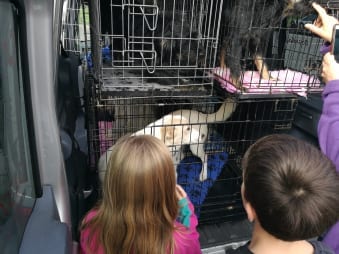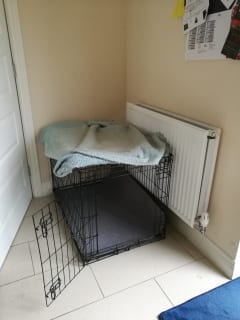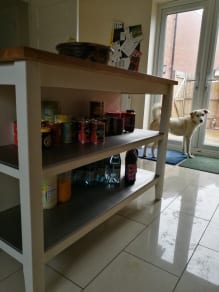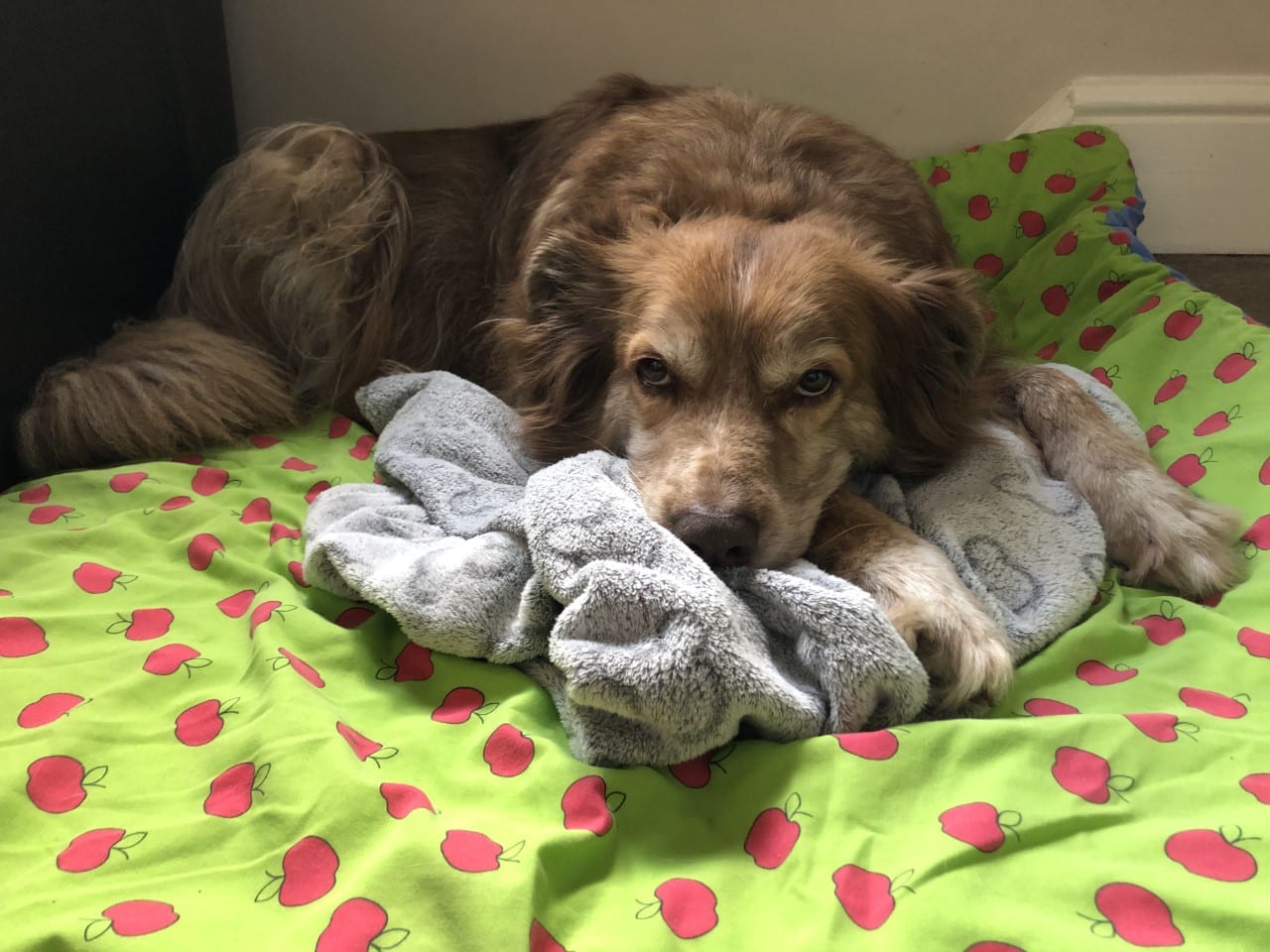Preparing for Your New Arrival
Yay! Congratulations, you have set the plan in motion and will soon be welcoming your new Romanian Rescue Dog. We are one big family here, supporting 1 Dog At A Time Rescue and we want you to know that we are here to offer whatever support or advice you may need as you settle in your newly adopted puppy/dog.
So, are you Excited? I would be! But are you ready? Well, there are a few things to think about, so let’s run through them one by one.

Our Romanian dogs (or Rommies as they’re called) arriving on the 1 Dog at a Time Rescue Freedom Bus
The Plan
Now, this might not be where you thought I would start, but in my opinion, it is the right place. Have you ever heard the phrase “Fail to plan, plan to fail”? This is an excellent motto to bear in mind in most situations, and adopting a rescue dog is no exception.
So, ask yourself this; “Where is my dog going to be allowed in the house?” If you plan to allow your new pal access to the whole house, then you will need to review the entire house for safety before he/she arrives. If you plan to have designated areas where your pup can go, then there is less area to review, but you will also have to consider how you plan to prevent your pup going where he/she is not allowed.
The plan also includes how and to what level you plan to train your new friend. Now, you won’t really be able to decide the details of a training plan before meeting your pup, but you can give some thought to what you want to achieve. Do you want a dog who understands what is and is not acceptable, relinquish items to you on command, barks at strangers coming to the door, doesn’t bark at strangers coming to the door, sits and waits quietly when told, walks nicely on a lead without pulling your arms out, comes back to you when called, does tricks for treats, enters dog agility classes? Many things can be achieved provided you are clear with yourself and then your pet from the outset. So, you may want to think about making a list of the most important things you want to achieve.
It is also worth noting the commands that you will use. Now, please bear in mind that, while dogs are very intelligent, they do not actually speak full English! I say this because one of the more common mistakes that I see in less experienced dog owners is the use of complete sentences to instruct or chastise. I am not in any way saying not to talk to your dog; on the contrary, I would encourage conversation. However, when you need to assert yourself and give a command, where possible, I would urge you to use a single word. If you have a family and your pet will be spending time with several people, writing down the command words for all to see and remember is a great idea. Now, if you want to be unusual, you could teach your dog to sit down whenever you say “Yellow”, but personally I stick with a more conventional approach! Thus core commands in our house are; Sit / Wait/ Leave It/ Give/ Come/ Lie Down/ Outside/ Heel, oh and of course “NO”. (Ok a couple of those are two-word commands, but it works provided you are consistent!)
The commands you will plan (plan, plan, plan..!) to use will depend upon the level of obedience and training you wish to achieve, but do give it some thought at the beginning.
The Environment
Ok, so let’s consider where your new pup will live, eat, sleep, play…
Now, you are most likely reading this because you are adopting a Romanian dog from 1 Dog at a Time Rescue. In which case, your new best friend could have come from the dreaded Romanian public shelters or may have just been abandoned on the street. Either way, on arrival, locking your pup in a small crate overnight could be quite a shock and will almost certainly introduce fear and anxiety rather than the sense of warmth and safety that you are hoping to offer. I have provided crates for my two, but I do not lock them in. The crates are “safe places” that I have covered with blankets to make them feel private. Our dogs are fed in their crates to reinforce the positive association with that place, and if they are laid quiet in their cages, then the children have strict instructions not to disturb them. Basically, we have used crates to provide a safe place our pups can retreat to if family life gets too much.

Regardless of whether you use a crate, or a bed, or a matt, the principle that I would encourage here is the same. Your pup needs a place of his own, a place he can be safe, a place where he will not be “interrupted” by others. Where will this place be?
So, how safe is the rest of the house? How big is your new pup? How high can they reach? (Hint – it is higher than you think, trust me!) What can they get hold of and chew?
Yes, you need to expect chewing. These lovely rescue dogs may not be familiar with all the stuff we surround ourselves with. They don’t know that wires hold electricity! Basically, in the nicest possible way, I would say that you need to toddler-proof your house, or at least the areas where your dog will be allowed to go! Now, they are not going to post slices of ham into the DVD player (yes – that happened to me!), but they can only explore their environment through their nose and mouth…. So new curiosities will be nibbled, just to see what they are… Chargers, earphones, blue tooth hand free things, the TV remote, coasters, kids’ toys, slippers, shoes anything that you can see is accessible I would encourage you to aim to relocate. Don’t worry, this is not a permanent requirement just a short-term preparation activity that you may want to maintain until you have your pup settled in.
Oh, any valuables? Any beloved ornaments that you would be very sad to see broken? Please move them out of the way. A beautiful glass vase or porcelain figurine will probably not be chewed, but it could easily be knocked off the shelf/coffee table by an exuberant pup who has not yet had time to get used to living in your home.

Before your Romanian Rescue Dog arrives you may need to re-think where you store food
If your pup will be living in only part of the house, then that is the focus of your preparation, if your pup will be allowed everywhere then there is a bit more preparation effort required.

Doors are kept closed to prevent access to rooms that are off limits
What about Toys? Well, while I would encourage you to have some items that your pup is allowed to play with, it may be worth waiting until they arrive before you buy a lot. You will very soon get an idea as to whether your pup likes soft toys or prefers hard things to chew. We have a lovely pet store near us, and we took our two in to see the toy range for themselves and gauge what they were interested in. With my two they are interested in food – not surprising given where they came from, so it is all about Kongs with food treats in. We fill the Kongs with peanut butter and put them in the freezer before we give them to the dogs, and it keeps them quiet for a while! (if using peanut butter – watch out for Xylitol, it is deadly poisonous to dogs!)
Any other pets?
If you don’t have any other pets, then you don’t need this bit, but if you do then I would encourage you to look at the pets and think how interesting/tempting they might be to a recently rescued stray dog? Hamsters spinning in their wheels are particularly enticing while cats are basically a law unto themselves!
In our case, we had a cat, a hamster and a corn snake before Bonnie and Clyde joined us. We chose to restrict the dogs’ access around the house, moving the hamster and snake cages into a room where the dogs would not be going without supervision. We also moved the cat (complete with food bowl, litter tray etc.) upstairs, which is currently still out-of-bounds for the dogs. If you have a young and feisty cat who will tackle the dog and fend for himself, or if you have a dog who arrives and is timid/wary of the cat, then you may have an easy assimilation into shared living space. However, dogs and cats are not natural best friends, so it would be wise to plan to have separate areas for separate pets at least to begin with. (there is that “plan” again…!)
If you are going to introduce your new dog to existing pets, please don’t do it all in one go and preferably not for the first week or two if possible. Plan to give your new friend some time to settle in, before introducing them to lots of extra challenges….
Remember – if you have any questions or concerns, we are here to help. Your Romanian rescue dogs have had such difficult lives before arriving with you, so we all want your adoption to be successful.
We have four other blog articles with advice and guidance called bringing your Romanian rescue home which you may be interested to read.
Bringing your Romanian rescue home part one CLICK HERE.
Bringing your Romanian rescue home part two CLICK HERE.
Bringing your Romanian rescue home part three CLICK HERE.
Bringing your Romanian rescue home part four CLICK HERE.
Please click here to contact us if you would like more information on 1 Dog At A Time Rescue UK.


